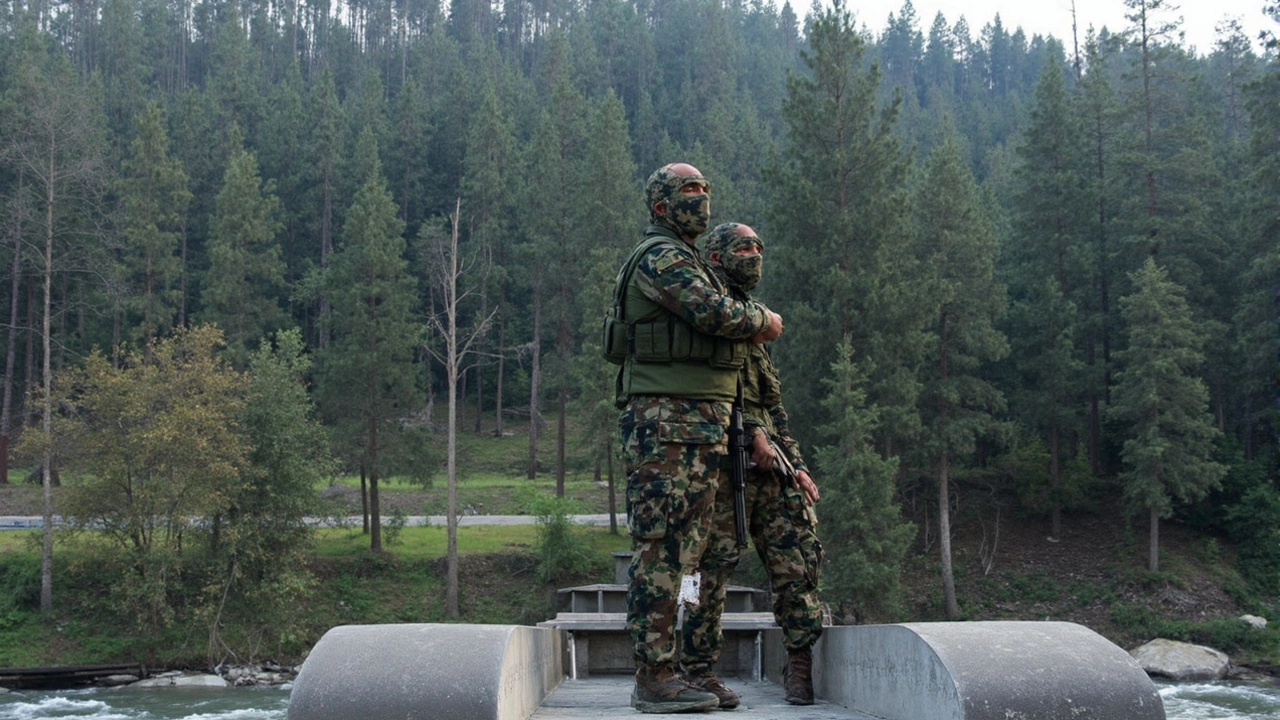Missile Strikes and the Kashmir Flashpoint
The atmosphere between India and Pakistan is burning hotter than it has in years. Just after dawn on May 7, 2025, Indian forces launched a series of missile strikes across the Line of Control targeting militant sites in Kashmir overseen by Pakistan. India says this was a direct response to the harrowing massacre last month, where gunmen murdered 26 Indian Hindu tourists in a popular meadow region of Kashmir, shattering any lingering hopes for peace in the area.
India's Defense Ministry claims the strikes hit nine different sites labeled as militant “infrastructure” – a catch-all phrase covering suspected training camps and logistical bases. According to Indian officials, these locations were being used to plan further attacks targeting civilians inside Indian territory. The initial death toll from these strikes sits somewhere between 19 and 26 people, with at least one child reportedly among the dead. But the true number may never be known, given the chaos and the rival narratives pouring out of both capitals.
The government in Islamabad flatly rejected India’s justification, insisting Pakistan has nothing to do with the bloody April attack on tourists. Still, the impact on the ground was undeniable. Amateur videos from the border region show villages reduced to rubble, survivors stumbling through smoke, and emergency staff struggling with the wounded. Local witnesses describe being awoken by explosions that made their windows rattle miles away.
Border Deaths and Diplomatic Rupture
Pushed into a corner, Pakistan responded immediately. The Prime Minister, Shehbaz Sharif, called India’s action an unprovoked “act of war,” promising that Pakistan would answer with force. Within hours, Pakistani air defenses claimed to have shot down several Indian fighter jets attempting to cross the border. Eyewitnesses in India-administered Kashmir reported seeing flaming wreckage of three Indian aircraft crashing into local villages. Official counts say seven civilians died from falling debris and from the intense Pakistani shelling that followed. Several more were left seriously injured, with hospitals quickly overwhelmed as residents fled border towns fearing more violence.
The violence didn’t stop at the border. Both countries moved swiftly to pull diplomats from each other’s capitals. Consulates emptied out almost overnight and travel between the nations ground to a halt as flights were banned from crossing shared airspace. An even more serious development: technical teams overseeing a decades-old water-sharing treaty simply went home, leaving future cooperation on life-sustaining rivers unresolved. All these moves add up to a freefall in relations that even veteran observers find worrying.
The United States, often quick to offer opinions on such crises, struck a muted note this time. State Department officials said only that they were “closely monitoring developments” and stopped short of taking sides or calling for restraint. It’s a sign of how cautious—and perhaps helpless—outside parties are feeling as the world watches two nuclear-armed neighbors edge closer to open conflict.
This latest eruption in Kashmir isn’t a bolt out of the blue. Both India and Pakistan have gone to war three times since 1947 over the bitterly contested region. In each round, hope for a lasting solution has been crushed under the weight of violence, political deadlock, and deep-seated mistrust. The current cycle of attack and counter-attack brings all these issues into sharp relief again, spurring fears that a single miscalculation might pull the whole subcontinent into something much worse.






India stood its ground. No more letting them plot in peace. 👊
This was all staged by the deep state to justify more military spending... I saw the same footage on 2019 and 2016. The drones are CGI. The crying kids? Actors. They pay them 500 rupees per tear. 🤡
I just saw a video of a grandmother in Kupwara holding her grandson’s shoe. That’s all that was left. I’m not even mad anymore. Just... heartbroken. How do we let this keep happening? This isn’t strength. This is failure.
Look the real issue here is not the strikes its the western media bias. They always paint us as aggressors but never mention how Pakistan has funded terror for 40 years. Also the water treaty? That was always a joke. Pakistan never paid their share anyway
I get why people are angry. But what’s the endgame? More villages burned? More kids orphaned? I don’t want to live in a world where our children grow up thinking bombs are normal. There has to be another way.
Bravo. Finally. Took long enough. The world needs to understand: silence is complicity.
Oh so now we’re heroes because we bombed some huts? What a moral victory. Next time maybe try diplomacy instead of fireworks. 🙄
THEY KILLED OUR TOURISTS. NOW THEY’RE PAYING IN BLOOD. THIS IS JUSTICE. NOT WAR. JUSTICE. I’M CRYING RIGHT NOW. I’M SO PROUD TO BE INDIAN. 🇮🇳🇮🇳🇮🇳
The real tragedy isn’t the missiles. It’s that we’ve turned grief into a national sport. We cheer destruction like it’s a cricket match. And then wonder why peace feels like a fairy tale.
We need to stop this cycle. Not with more force. With more dialogue. With more listening. Not just to our own anger. But to theirs too. It’s not weakness. It’s wisdom.
Wait wait wait - so if Pakistan had struck first, we’d be the villains? That’s the narrative? LOL. No. We’re the ones who didn’t nuke them yet. That’s called restraint. You’re welcome, world. 🤡
I’m so tired of this. But I’m still here. Still hoping. Still sending prayers to both sides. 💔❤️🙏 Let’s not lose our humanity in the noise.
I... I just... I don’t know what to say anymore. The silence in my house tonight is louder than the explosions. I hope someone finds peace soon. Please.
You people are naive. This isn’t about Kashmir. It’s about India’s rise. Pakistan is a failed state. They deserve to be humiliated. And if we nuke them tomorrow? Good. Let’s end it. One bomb. One solution.
There’s a lot of misinformation out there. The missile strikes targeted only confirmed militant sites - not villages. Pakistan’s claim of downed jets? Unverified. We’ve had satellite imagery released by independent analysts. Check the sources before you believe everything you see on WhatsApp.
I lost my brother in the 2016 Uri attack. I didn’t cheer when they bombed back. I cried. Again. This cycle doesn’t heal us. It just keeps breaking us.
To the parents in Kashmir - I’m so sorry. No child should grow up thinking bombs are lullabies. We owe you better. We owe ourselves better.
They say war is hell. But I think the real hell is when you stop feeling anything at all.
The international legal framework governing cross-border military operations has been consistently violated by both parties. The Geneva Conventions, while imperfect, remain the baseline. The absence of due process and civilian casualty transparency constitutes a grave breach.
Peace is possible. I believe it. 💕 One day, maybe our kids will play together on both sides of the border. Until then... I send love. 🌸